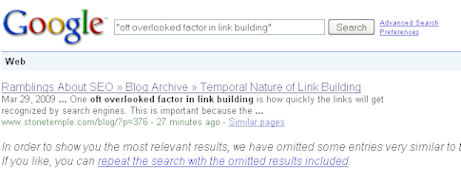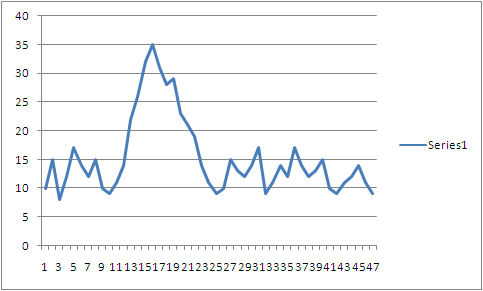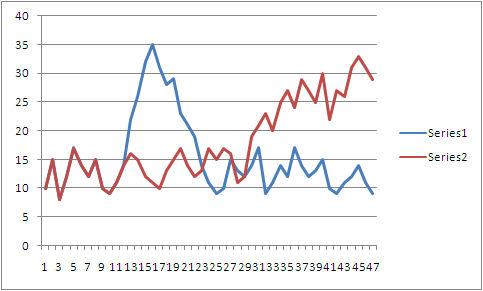One often overlooked factor in link building is how quickly the links will get recognized by search engines. This is important because the speed with which links are recognized determines the time delay between getting the links and seeing improvements in search engine rankings. In today’s dollar-conscious environment business managers want to know when they are going see a return on their link building investment. They also want to know about any ongoing costs.
To illustrate how different the results can be, we are going to compare 2 scenarios:
Scenario 1
You implement an outreach campaign to bloggers. You get large numbers of bloggers to write about your site, and they include nice links back to you. This provides some good exposure and some good links to boot.
The beauty of the blog approach is that the search engines recognize that blogs provide fresh content, and the search engine strives to index new blog content in minutes. As an example of this, here is a screenshot of this blog post showing up in Google within 15 minutes of this post going live:
 |
As a result, any links in this post will get picked up by the search engines in minutes after implementation. This is all a result of the search engine’s desire to pick up fresh content rapidly. An important factor in the search engine’s crawling patterns is the rate at which they believe pages are likely to change. Since blog pages change rapidly, the search engines check on them frequently (provided that the search engines value the blog based on its inbound links, this phenomenon does not happen with every blog).
The downside of this is that blog postings age, and move off the home page of the blog. Once the post is relegated to the archives, the value of the link diminishes greatly. Worse still is that the size of the initial traffic bump achieved through these types of links is driven by a phenomenon called Query Deserves Freshness. Fresh news posts are given higher rankings because of their freshness. As the news gets old, it loses its boost. As a result, you might expect the traffic boost from a blog outreach campaign to look something like this:
 |
Scenario 2
In this scenario, you implement a link building campaign targeted at major sites, which are not blogs. Perhaps you have an angle that will get you into college and university sites, or a content syndication program, or a badge program, all targeted at sites which are not blogs or news sites.
The beauty of these types of links is that they don’t age. Once they are discovered, they will provide persistent and ongoing value. The challenge is that the time to discover these links may be much, much greater, than with our blog outreach campaign. Many times these types of pages do not change rapidly, so the search engine crawlers have little incentive to visit these pages that often.
So they will take longer to discover, and even after discovered, it will take some time before it is included as a ranking signal in the index. Why is that? Because QDF is not providing any urgency to the search engine. As a result, this falls into a different update process. Here is a comparison of our two link building campaigns:
 |
Summary
The delay we see in a “static” link campaign kicking may well be longer than outlined in our chart above. Yet, the long term results from the static campaign should be larger in quantity, and an ongoing investment will build upon the foundation of earlier link building campaigns. This is not the case with most blog-focused campaigns as they need ongoing investment just to sustain the original boost.
What works best for your business depends on the circumstances of the business, the competition, and where the best link campaigns are for you (i.e. who are the people who would be inclined to link to you?). But, understanding how the different type of campaigns differs in delivering results should be a factor in your link planning.
